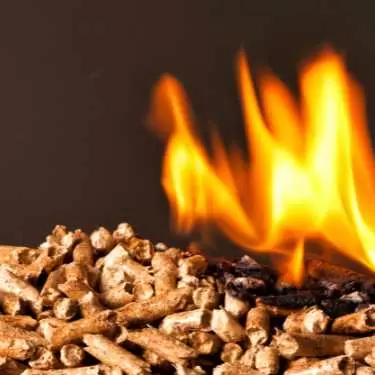
Columbus Homeowners’ Guide to Alternative Heating Options
As Columbus homeowners look for efficient, cost-effective ways to heat their homes, exploring alternative heating options has become increasingly popular. Traditional furnaces and boilers remain reliable, but newer technologies like heat pumps, radiant floor heating, and ductless mini-splits offer unique benefits that may better fit your home’s needs and lifestyle.
Understanding the pros and cons of each heating method allows homeowners to make informed decisions, optimize energy efficiency, and maintain comfort during the colder Ohio months.
Choosing the Right Alternative Heating Option for Your Home
Selecting a heating system involves evaluating energy efficiency, installation costs, home layout, and long-term maintenance. Here’s a breakdown of the most common alternative heating solutions available to Columbus homeowners.
Heat Pumps
-
How They Work: Transfer heat from the outside air (even in cold weather) into your home.
-
Pros:
-
Highly energy-efficient for mild to moderate climates
-
Can provide both heating and cooling
-
Lower operating costs than traditional electric furnaces
-
Eligible for certain energy rebates in Ohio
-
-
Cons:
-
Less effective in extreme cold without a supplemental heating source
-
Higher upfront cost compared to conventional systems
-
Requires professional installation for optimal performance
-
Radiant Floor Heating
-
How It Works: Heated water or electric coils installed under the floor radiate heat upward, warming the space evenly.
-
Pros:
-
Provides consistent warmth without drafts
-
Silent operation
-
Ideal for tile, stone, or hardwood floors
-
Can reduce dust and allergens compared to forced-air systems
-
-
Cons:
-
Expensive to install in existing homes (retrofits are more complex)
-
Repairs can be disruptive if issues occur under the flooring
-
Limited cooling capabilities
-
Ductless Mini-Split Systems
-
How They Work: Compact wall-mounted units heat or cool individual rooms without the need for ductwork.
-
Pros:
-
Zoned heating allows energy savings by heating only occupied areas
-
Easy installation with minimal disruption
-
Can supplement existing HVAC systems
-
Often more energy-efficient than baseboard or space heaters
-
-
Cons:
-
Higher upfront cost per unit
-
Indoor units may affect room aesthetics
-
Requires multiple units for whole-home coverage
-
Electric Baseboard Heating
-
How It Works: Electric resistance heating runs along walls to radiate heat.
-
Pros:
-
Simple, reliable, and easy to install
-
No ductwork required
-
Low maintenance
-
-
Cons:
-
Less energy-efficient than heat pumps
-
Can increase electricity bills
-
Limited in whole-home applications for larger spaces
-
Gas Fireplaces
-
-
How They Work: Use natural gas or propane to produce heat and often come with a built-in blower to circulate warmth.
-
Pros:
-
Clean-burning and convenient — no wood or pellet storage needed
-
Easy to turn on and off with a switch or remote
-
Provides both heat and ambiance
-
Low maintenance compared to wood or pellet stoves
-
-
Cons:
-
Typically supplemental heat rather than whole-home solution
-
Installation requires proper venting and gas line connection
-
Higher upfront cost than traditional space heaters or baseboard systems
-
-
Factors Columbus Homeowners Should Consider
When evaluating alternative heating options, homeowners should consider multiple factors beyond upfront costs.
Installation and Space Requirements
-
Heat pumps and ductless mini-splits require professional installation and specific placement for efficiency.
-
Radiant floor heating may involve major renovations for retrofits.
-
Pellet or wood stoves need proper ventilation and clearance space.
Energy Efficiency and Operating Costs
-
Heat pumps generally offer the best long-term energy savings in mild to moderate climates.
-
Electric baseboards are affordable to install but may cost more to operate.
-
Wood and pellet stoves can reduce energy bills if fuel is affordable, but efficiency varies by stove type.
Maintenance and Longevity
-
Heat pumps require annual inspections to maintain efficiency.
-
Radiant floor systems are low maintenance but repairs can be invasive.
-
Pellet and wood stoves need regular cleaning and maintenance to function safely.
Home Comfort and Lifestyle
-
Radiant floor heating provides even warmth and is ideal for bathrooms and kitchens.
-
Ductless mini-splits allow customizable comfort for each room.
-
Wood stoves provide aesthetic appeal and supplemental heat but may not be sufficient for larger homes.
Making the Decision
Choosing an alternative heating option depends on your home’s size, layout, energy goals, and budget. Columbus homeowners can benefit from consulting a licensed HVAC professional to determine which system delivers the best combination of efficiency, comfort, and reliability.
Professional evaluation ensures:
-
Proper sizing and placement of equipment
-
Compliance with local building codes
-
Integration with existing HVAC systems if needed
-
Long-term reliability and energy efficiency
Ready to Explore Your Alternative Heating Options in Columbus, OH?
If you’re considering a heat pump, radiant floor heating, or ductless mini-split system, the team at Sears Heating & Cooling can help you make the best choice for your home. Our Columbus experts provide professional installation, maintenance, and system evaluations to ensure optimal comfort and efficiency.
Call today 614-475-1800 or schedule online to find the perfect alternative heating solution for your Columbus home.

